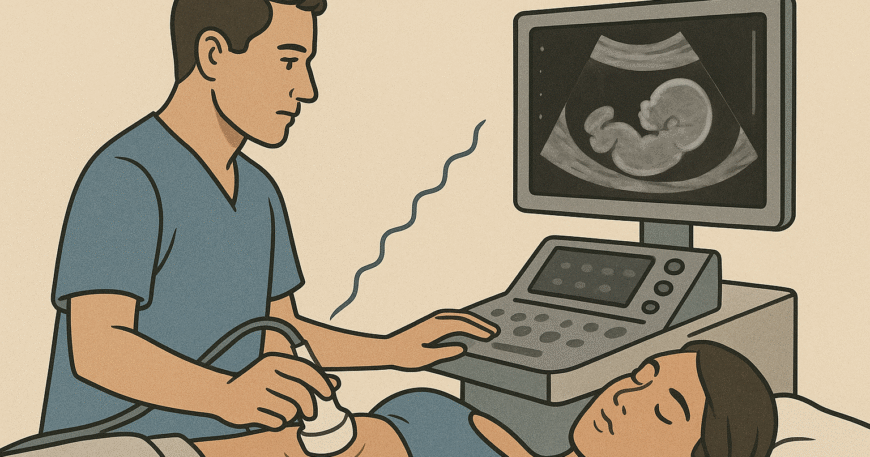
How Diagnostic Ultrasound Equipment Helps Doctors See What the Eye Can’t
Diagnostic ultrasound equipment has become an essential tool in modern medicine. It allows doctors to look deep inside the human body without the need for surgery or exposure to radiation. Whether it’s monitoring a pregnancy or diagnosing a heart issue, this technology plays a vital role in healthcare. In this blog, we’ll explain how diagnostic ultrasound equipment works, where it’s used, and why it matters.
What Is a Diagnostic Ultrasound?
A diagnostic ultrasound is a medical imaging technique that uses high-frequency sound waves to create images of internal body structures. It helps healthcare providers examine organs, tissues, and blood flow in real time. Unlike X-rays or CT scans, ultrasounds do not use ionizing radiation, making them safer, especially for pregnant women.
How Does Technology Work?
Diagnostic ultrasound equipment includes a machine and a handheld device called a transducer. The transducer sends sound waves into the body and then listens for echoes. These echoes are processed by the diagnostic ultrasound system to create visual images. The process is simple, painless, and quick.
This equipment can show real-time movement, which is especially useful in observing a beating heart or a developing fetus.
Common Uses of Diagnostic Ultrasound Equipment
Doctors use this equipment in a wide range of medical fields. Some of the most common areas include
- Obstetrics: Monitoring fetal growth and health during pregnancy
- Cardiology: Checking heart function and blood flow
- Abdomen: Diagnosing issues with the liver, gallbladder, kidneys, and more
- Musculoskeletal: Evaluating muscles, joints, and tendons
- Urology: Examining the bladder, kidneys, and reproductive organs
These applications show how diagnostic ultrasound equipment helps doctors detect conditions early and plan appropriate treatments.
Diagnostic Ultrasound Machine vs. System
While often used interchangeably, a diagnostic ultrasound machine typically refers to the hardware unit, while the diagnostic ultrasound system includes both hardware and software. Both work together to process signals and generate accurate images.
With modern advancements, portable machines have become common, especially in emergency and rural settings where access to full imaging departments may be limited.
Diagnostic Ultrasound Training
Using this technology requires proper training. Healthcare professionals must complete diagnostic ultrasound training to understand how to operate the machine, position the transducer correctly, and interpret the images. Training programs can vary from short certifications to full academic degrees, depending on the specialization.
Proper training is essential to reduce errors and ensure that the diagnostic ultrasound equipment is used effectively.
Frequency Matters: What Is Diagnostic Ultrasound Frequency?
The term “diagnostic ultrasound frequency” refers to the pitch of the sound waves used. Different frequencies serve different purposes:
- High frequency (7–18 MHz): Provides detailed images but doesn’t penetrate deeply; ideal for superficial structures like the thyroid or breast.
- Low frequency (2–5 MHz): Penetrates deeper tissues; used for abdominal and pelvic scans.
Choosing the right frequency ensures better results based on the patient’s needs.
Manual of Diagnostic Ultrasound: A Valuable Resource
Professionals often refer to the manual of diagnostic ultrasound published by organization like WHO. This manual offers guidelines for using equipment, maintaining hygiene, and interpreting common patterns in ultrasound images. It’s a go-to guide for medical staff worldwide.
Diagnostic vs. Therapeutic Ultrasound
It’s important to note the difference between therapeutic ultrasound and diagnostic ultrasound:
- Diagnostic ultrasound: Used for imaging and diagnosis
- Therapeutic ultrasound uses sound waves to treat conditions like muscle injuries
Knowing the difference helps patients understand why and how a particular method is being used.
Why This Technology Matters in Hospitals
Diagnostic ultrasound equipment is a cornerstone of early diagnosis. It’s safe, fast, and non-invasive. Hospitals rely on it for routine checks, emergency diagnostics, and specialized fields like gynecology or cardiology. The affordability and portability of newer machines have also made them accessible in smaller clinics and rural health centers.
Real Facts and Sources
- The World Health Organization (WHO) states that diagnostic ultrasound is the most widely used imaging technique globally.
- According to the Radiological Society of North America (RSNA), over 100 million ultrasound exams are performed each year worldwide.
- A study in the Journal of Ultrasound in Medicine found that proper use of ultrasound improves diagnostic accuracy by 30% in certain conditions.
Final Thoughts
Diagnostic ultrasound equipment continues to transform modern healthcare. From visually analyzing a baby’s heartbeat to checking organ function, this tool has become a must-have in hospitals around the world. With continued advancements in diagnostic ultrasound machine design and training, even more precise and accessible care will be possible.
Understanding how this technology works helps patients appreciate its value and feel more confident during procedures. As hospitals invest in better diagnostic ultrasound systems and education, patients everywhere can benefit from safer, quicker, and more reliable medical imaging.
FAQS
1. What is a diagnostic ultrasound used for?
A diagnostic ultrasound is used to visualize internal organs, monitor pregnancies, assess blood flow, and diagnose various medical conditions.
2. Is ultrasound safe during pregnancy?
Yes, it is considered very safe. Unlike X-rays, ultrasound doesn’t use harmful radiation, making it ideal for fetal monitoring.
3. What’s the difference between diagnostic and therapeutic ultrasound?
Diagnostic ultrasound creates images of internal body structures, while therapeutic ultrasound is used to treat conditions such as muscle pain or inflammation.
4. How long does a diagnostic ultrasound take?
Most procedures take 15–45 minutes, depending on the area being examined.
5. Do all hospitals use the same ultrasound machines?
No, equipment can vary based on brand, features, and budget. However, most hospitals have access to standard diagnostic ultrasound systems.
Call to Action
If you’re for accurate, safe, and professional diagnostic imaging, Shaafi Hospital Alipur Islamabad is here for you. Our state-of-the-art diagnostic ultrasound equipment ensures you get the care you deserve.
📞 Call us: 051 2615517 / 0345 5005033
🌐 Visit: https://shaafihospital.pk/
